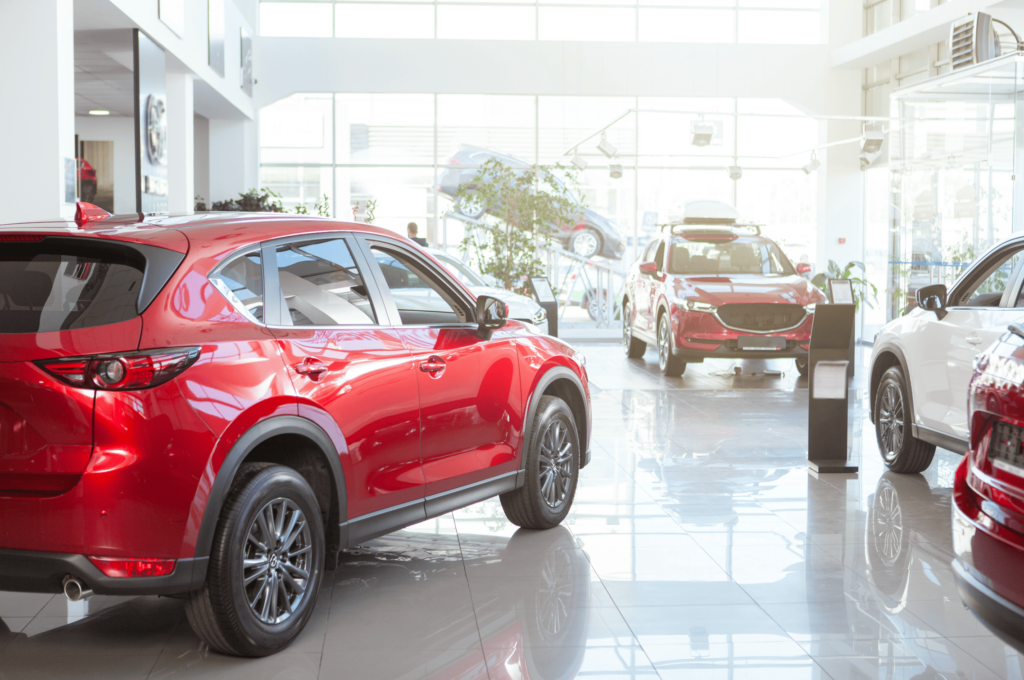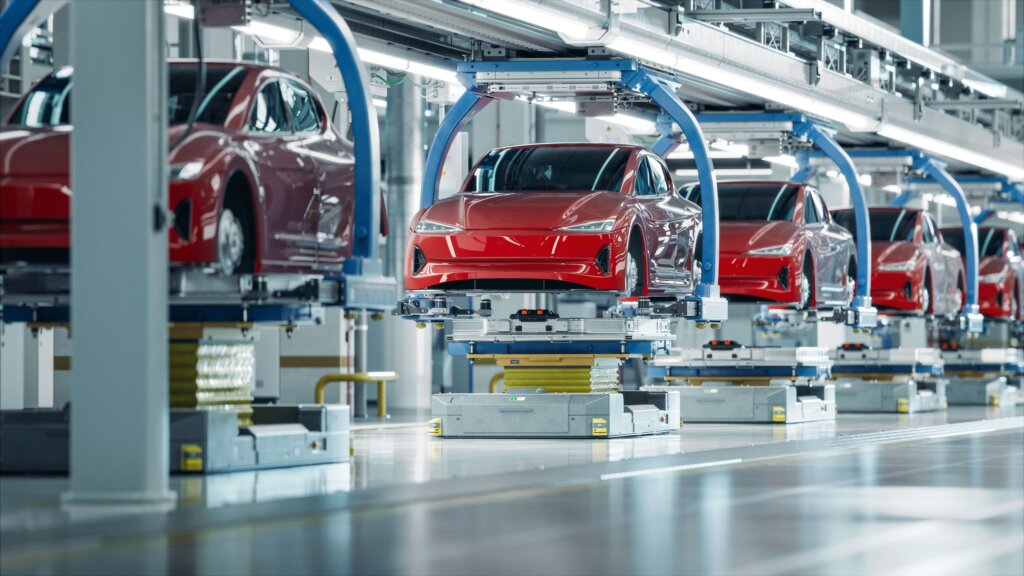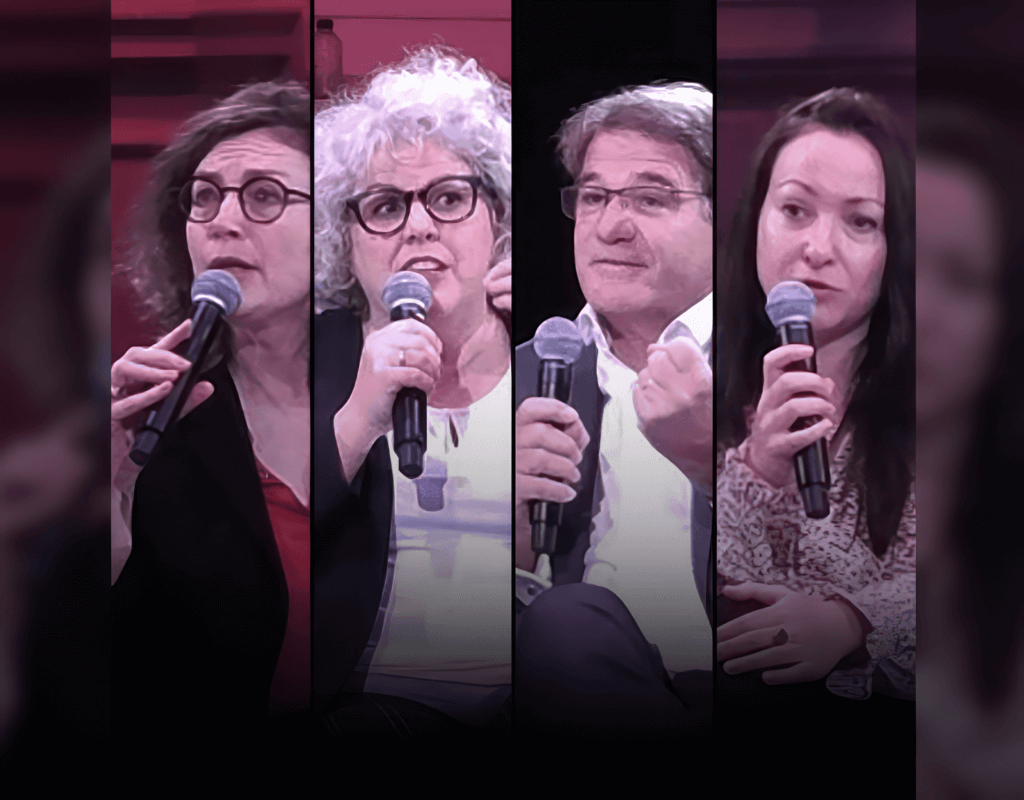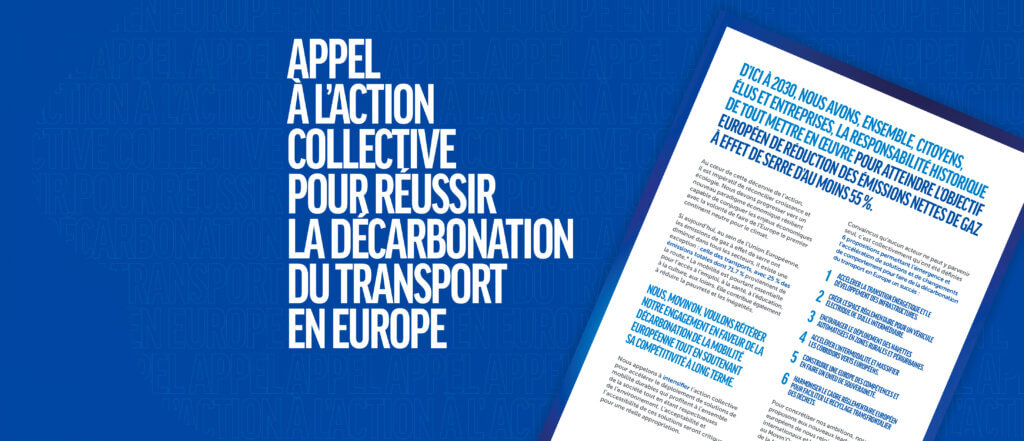Biden Charging Plan Powers Cross-Country EV Freight Corridors
President Joe Biden is serious about building new National Electric Vehicle Freight Corridors across the United States to power electrified zero-emission trucks and buses. He knows the success of his freight corridor plan depends on the convenience and cost of charging the big rigs, so the administration is offering a strategy to supply plenty of charging power.

President Joe Biden is serious about building new National Electric Vehicle Freight Corridors across the United States to power electrified zero-emission trucks and buses. He knows the success of his freight corridor plan depends on the convenience and cost of charging the big rigs, so the administration is offering a strategy to supply plenty of charging power.
On March 12, the Biden-Harris Administration released the first U.S. National Zero-Emission Freight Corridor Strategy. Developed by a group of federal government agencies, the Strategy will guide the deployment of zero-emission medium- and heavy-duty vehicle charging and hydrogen fueling infrastructure for the next 15 years.
The plan to install battery charging and hydrogen refueling stations for electric trucks covers roughly 12,000 miles (19,312 km) of the interstate highways most used by heavy-duty trucks, as well as the largest U.S. container ports.
Four federal agencies collaborated on mapping the corridors. The Joint Office of Energy and Transportation and the Department of Energy worked in collaboration with the Department of Transportation and the Environmental Protection Agency.
Covering the years from 2024 to 2040, the Strategy is designed to meet what the administration predicts will be “growing market demands.”
“For over a century, petroleum-fueled freight has transported vital food and resources to American families but at the same time, these vehicles have also contributed to lower public health, especially in densely populated communities,” U.S. Energy Secretary Jennifer Granholm said.
“The Biden-Harris Administration is addressing this issue head-on with innovative strategies to transform freight so it not only supports American families and businesses, but also protects the environment for future generations,” said Granholm, who served as governor of Michigan, America’s automotive center, from 2003 to 2011.
The Biden Administration’s latest move toward coping with the climate crisis is to electrify the on-road part of the supply chain just as quickly as possible, and then to accelerate that pace.

“The Federal Highway Administration is pleased to announce these new freight EV corridor designations along our national highways,” Shailen Bhatt, the agency’s administrator, said March 12. “Medium- and heavy-duty trucks in our current freight network contribute approximately 23 percent of greenhouse gas emissions in the U.S. transportation sector.”
“These new designations and Strategy will help to grow our national EV charging network, encourage clean commerce within the freight community, and support President Biden’s goals of achieving net-zero emissions for the nation by 2050,” Bhatt said.
The goal of the Strategy is to align public policy and investments by prioritizing, sequencing, and accelerating infrastructure along the National Highway Freight Network in four phases.
* – Establish priority hubs based on freight volumes (2024-2027)
* – Connect hubs along critical freight corridors (2027-2030)
* – Expand corridor connections initiating network development (2030-2035)
* – Achieve national network by linking regional corridors for ubiquitous access (2035-2040)
See the National Zero-Emission Freight Corridor Strategy for additional maps and detail.
Announcing the new freight corridors, the White House said, “A core objective of the Strategy is to meet freight truck and technology markets where they are today, determine where they are likely to develop next, and set an ambitious pathway that mobilizes actions to achieve decarbonization.”
The Strategy identifies what the authors see as the greatest opportunities to support early introduction of ZE-MHDVs, an acronym that will become familiar, however strange and unwieldy it appears now.
It stands for zero-emission medium- and heavy-duty vehicles, ZE-MHDV.
The Strategy promotes “cost savings for commercial fleets, cleaner air for communities, and strategic investments for infrastructure companies and electric utilities.”
The plan includes zero-emission fuels and diverse truck applications representing Classes 4 through 6, including first- to last-mile delivery trucks, local work and service trucks, and school buses; and Classes 7 and 8, including refuse, transit, coach bus, port drayage, regional haul, and eventually long-haul transportation.
As charging infrastructure is built within freight hubs and along the connecting corridors, the opportunity for longer-range transportation to occur between these locations is more likely, says the Strategy, catalyzing market expansion and transformation.
This approach is intended to support the commercial ZE-MHDV market, both “where it is growing and where it can succeed first,” the plan says.
“TRANSPORTATION POLICY IS INSEPARABLE FROM HOUSING AND ENERGY POLICY, AND TRANSPORTATION ACCOUNTS FOR A MAJOR SHARE OF U.S. GREENHOUSE GAS EMISSIONS, SO WE MUST WROK TOGETHER IN AN INTEGRATED WAY TO CONFRONT THE CLIMATE CRISIS. EVERY DECISION ABOUT TRANSPORTATION IS ALSO AN OPPORTUNITY TO BUILD A CLEANER, HEALTHIER, MORE PROSPEROUS FUTURE. – Pete Buttigieg, Secretary, U.S. Department of Transportation
The Biden Administration expects the new corridors for hauling freight to help achieve national climate goals, and, particularly, deliver health benefits for historically disadvantaged populations that suffer the worst impacts of pollution from freight emissions.
“This is a big move to deliver environmental justice; 75 percent of heavy truck traffic travels on just four percent of our nation’s roads, jeopardizing the health of our most vulnerable communities,” President Biden’s National Climate Advisor Ali Zaidi said.
“President Biden’s historic investments in zero-emission infrastructure on those high-traffic roads and the hubs they connect will rapidly transform freight transport in the U.S. and strengthen American innovation,” Zaidi predicted.
Battery electric and hydrogen fuel cell vehicle technology, along with other zero-emission forms of freight transport, have considerable potential to save Americans money on consumer goods due to reduced fueling and maintenance costs of transport.
“Through the President’s whole-of-government strategy, this administration is delivering a win-win-win for frontline communities who will benefit from cleaner air, businesses that will save millions on fuel costs, and for our climate,” Zaidi said.
Michael Regan, who heads the U.S. Environmental Protection Agency, is working to make that happen. “The Environmental Protection Agency is working with our federal partners to aggressively reduce pollution that is harming people and our planet, while saving families money at the same time. At EPA, our priority is to protect public health, especially in overburdened communities, while advancing the President’s ambitious climate agenda. This Blueprint is a step forward in delivering on those goals and accelerating the transition to a clean transportation future.”
Truck Stop Owners See Potential Prosperity
From Alexandria, Virginia, the National Association of Truck Stop Owners (NATSO), representing truck stops and travel plazas, and SIGMA, a trade association of American fuel marketers, were supportive of the new corridors, they said in a joint statement.
“We are grateful that the Biden Administration is recognizing the critical link between how freight moves today and the efficient build-out of a nationwide network of charging stations for medium and heavy-duty trucks. For this to work, it needs to impose minimal disruption on how businesses operate today. This plan recognizes that,” David Fialkov, executive vice president of government affairs for NATSO and SIGMA, said.
“Fuel retailers are at the forefront of investments in new refueling technologies and their requisite infrastructure. We have long held that President Biden’s goal of establishing a nationwide network of electric vehicle charging stations for all vehicle classes is best achieved by harnessing the existing nationwide network of refueling locations,” Fialkov said.
“Directing states to adopt a phased approach that prioritizes investments along key freight corridors can harness the existing nationwide network of refueling locations along the Interstate Highway System and encourage investment in emerging refueling technology,” Fialkov predicted, while seeing the challenges at the same time.
“Many challenges exist to electrifying commercial trucks, including electricity generation and access as well as the need for fuel retailers to generate a return on investment. We appreciate that the Biden Administration has recognized some of these concerns and appears to have developed an iterative and thoughtful approach to directing investment in a medium and heavy-duty charging network,” he said.
Trucking-Involved Companies On Board
Demand for heavy-duty electric vehicles is on the rise, according to Uber Freight, which says that 77 percent of U.S. shippers are considering them today or in the future.
However, the availability and accessibility of adequate charging infrastructure is one of the largest hurdles for making commercial electric truck adoption and deployment a reality.
To accelerate the development and installation of public charging infrastructure for heavy-duty trucks, Uber Freight and electric truck charging provider Greenlane, a $650 million joint venture between Daimler Truck North America; NextEra Energy Resources, LLC; and BlackRock, through a fund managed by its Climate Infrastructure business, today announced a collaboration expected to yield greener supply chains ahead.
Through this collaboration, Greenlane will leverage insights from Uber Freight’s logistics network, representing $18 billion in active Freight Under Management, Uber Freight claims.
Greenlane CEO Patrick Macdonald-King said, “Our national network of EV charging and hydrogen fueling stations together with our Uber Freight collaboration will make the electrification transition easier for shippers. Together, we will pave the way for a greener and more efficient future in logistics.”
The Heavy-duty Leadership Group (HDLG), an informal alliance of companies involved in trucking that includes BorgWarner, Cummins, Eaton, and Ford, expressed its support for the new National Zero-Emission Freight Corridor Strategy’s phased in approach to pollution-free freight transport.
Patrick Quinn, executive director of the HDLG, commended the plan. “The National Zero-Emission Freight Corridor Strategy rightfully directs federal agencies to consider all available technology adoption and market dynamics, while focusing on areas where the deployment of commercial zero-emission vehicles could be accelerated through public and private funding as well as the targeted buildout of essential infrastructure,” he said.
“THE PHASED-IN APPROACH, WHICH FIRST FOCUSES ON CRITICAL HUBS AND THEN CORRIDORS, SHOULD RESULT IN REALISTIC DEPLOYMENT EXPECTATIONS THAT CAN DRIVE INVESTMENT, JOB CREATION AND U.S. TECHNOLOGY LEADERSHIP.” – Patrick Quinn, Executive Director, Heavy-Duty Leadership Group
Quinn believes the Strategy is “one of the important steps toward helping the industry achieve stringent Phase 3 emissions standards expected from the Environmental Protection Agency.”
These companies appreciate the strategy’s recognition of “critical factors including energy costs, grid readiness, industry concentration and available funding to ensure we build out necessary infrastructure,” Quinn said.
Clean Air Advocates Applaud
“The new Zero Emission Freight Corridor Initiative will be major boon for public health and health equity. We applaud this plan to ensure that truck routes have the infrastructure in place needed to fully support zero-emission trucks,” the American Lung Association’s President and CEO Harold Wimmer said.
“Transitioning to zero-emissions heavy-duty and medium-duty vehicles is a health imperative,” he declared.
The Lung Association’s 2022 report, “Delivering Clean Air,” found that a transition to zero-emission trucks and electricity near the nation’s busiest trucking routes would result in $735 billion in cumulative health benefits by 2050, with 67,000 fewer pollution-related deaths, 1.75 million fewer asthma attacks and 8.5 million fewer work days lost.
Calling the transition to zero-emission trucks “…one of the most important clean air interventions the nation can take,” Winner applauded the administration for taking the initiative and urged even stricter standards.
“To fully implement the new Zero-Emission Freight Corridor Strategy and protect health from diesel pollution, the Biden administration must also urgently finalize its cleaner trucks standards,” Wimmer said. A recent poll by the Lung Association showed that 72% of American voters nationwide support the EPA setting stricter limits on carbon emissions from heavy-duty vehicles.
“Electric trucks are the future of the trucking industry,” Jason Mathers, associate vice president for the nonprofit Environmental Defense Fund’s zero-emission trucks initiative, said. “Hundreds of fleets are operating these trucks today or have them on order. This plan prioritizes investments in charging infrastructure to match this path of growth.”
The Biden plan focuses near-term investments in urban areas where these trucks are being operated today, Mathers explained.
“Today’s announcement meets this moment with a long-term plan that should give fleets the confidence to scale their electrification efforts and state policymakers a roadmap to support the zero-emission transition,” he said.
The Strategy comes soon after a $3 billion commitment from the Environmental Protection Agency in February to fund the transition to zero-emission freight trucks, marine vessels and port handling equipment – and the infrastructure to fuel them – at U.S. ports.
All these actions are part of a series of major investments in zero-emission trucking from the Biden Administration. There are billions of dollars worth of grants to support the adoption of mass transit and zero-emission school buses, critical tax credits to support fleet purchases of electric trucks and chargers, and investments that support domestic manufacturing of zero-emission vehicles, batteries and other major components.
All Movin'On news
in your mailbox
Auteur
Share
Tweets de @movinonconnect
Movin'On 2035 TODAY EP02 - Circular Economy & Competitivity
Movin’On 2035 TODAY EP01 – Fair Mobility for All https://x.com/i/broadcasts/1yNxagBrWZbGj
✨ THAT'S A WRAP!
Movin'On Summit 2024 has just concluded in Brussels!
More than 350 leaders and experts in sustainable mobility gathered to exchange ideas, collaborate, and share their vision for desirable and decarbonised mobility in Europe. Together, we explored ways to build…
🔴 Live from #MovinOnSummit2024
@AshaSumputh has just invited Denis Machuel, CEO at @AdeccoGroup and Florent Menegaux, President of the @Michelin Group & President of Movin'On
Sustainable mobility news
Discover the latest trends, analyses per theme, and our next meetings.






